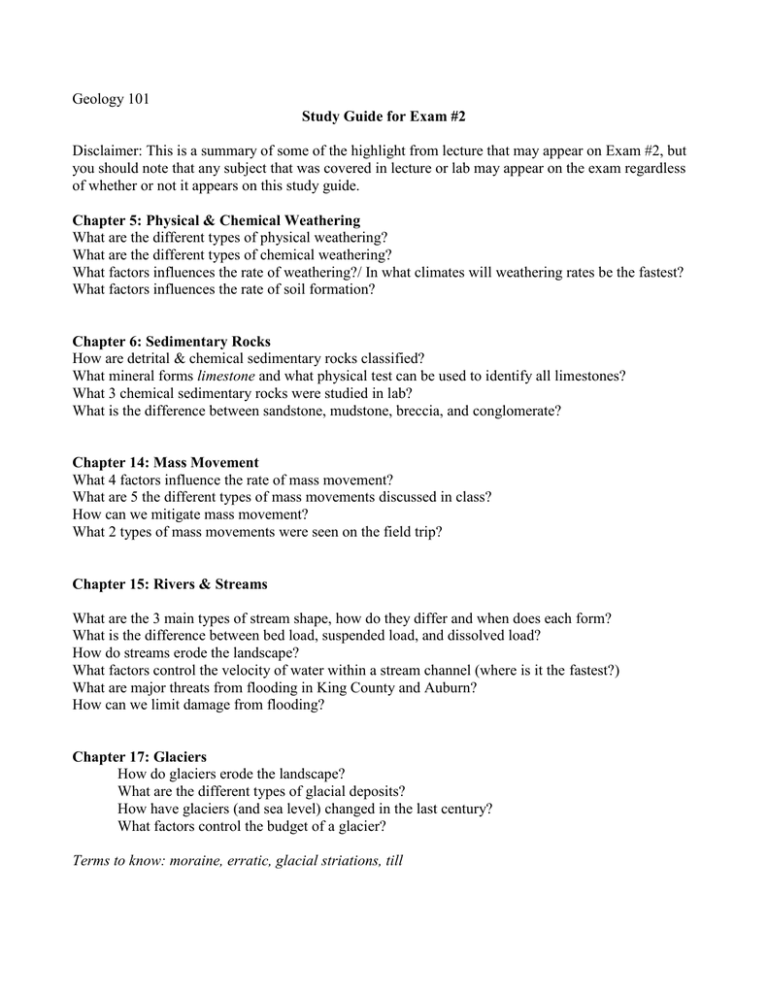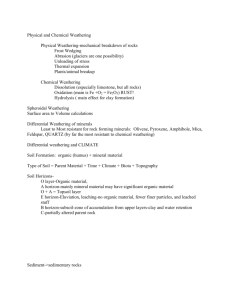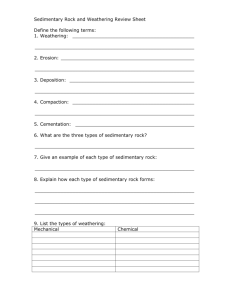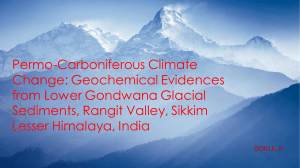Geology 101 Study Guide for Exam #2
advertisement

Geology 101 Study Guide for Exam #2 Disclaimer: This is a summary of some of the highlight from lecture that may appear on Exam #2, but you should note that any subject that was covered in lecture or lab may appear on the exam regardless of whether or not it appears on this study guide. Chapter 5: Physical & Chemical Weathering What are the different types of physical weathering? What are the different types of chemical weathering? What factors influences the rate of weathering?/ In what climates will weathering rates be the fastest? What factors influences the rate of soil formation? Chapter 6: Sedimentary Rocks How are detrital & chemical sedimentary rocks classified? What mineral forms limestone and what physical test can be used to identify all limestones? What 3 chemical sedimentary rocks were studied in lab? What is the difference between sandstone, mudstone, breccia, and conglomerate? Chapter 14: Mass Movement What 4 factors influence the rate of mass movement? What are 5 the different types of mass movements discussed in class? How can we mitigate mass movement? What 2 types of mass movements were seen on the field trip? Chapter 15: Rivers & Streams What are the 3 main types of stream shape, how do they differ and when does each form? What is the difference between bed load, suspended load, and dissolved load? How do streams erode the landscape? What factors control the velocity of water within a stream channel (where is it the fastest?) What are major threats from flooding in King County and Auburn? How can we limit damage from flooding? Chapter 17: Glaciers How do glaciers erode the landscape? What are the different types of glacial deposits? How have glaciers (and sea level) changed in the last century? What factors control the budget of a glacier? Terms to know: moraine, erratic, glacial striations, till







